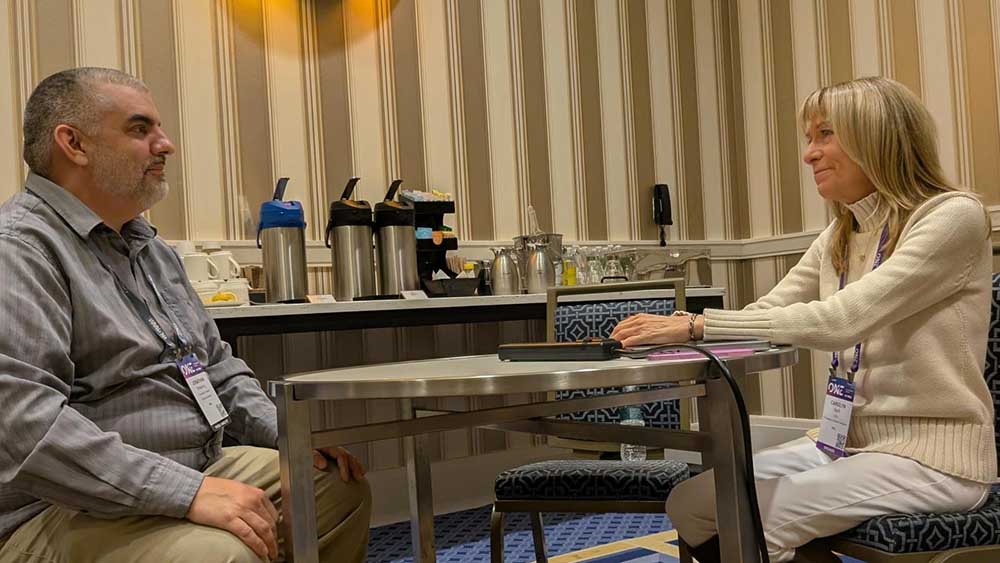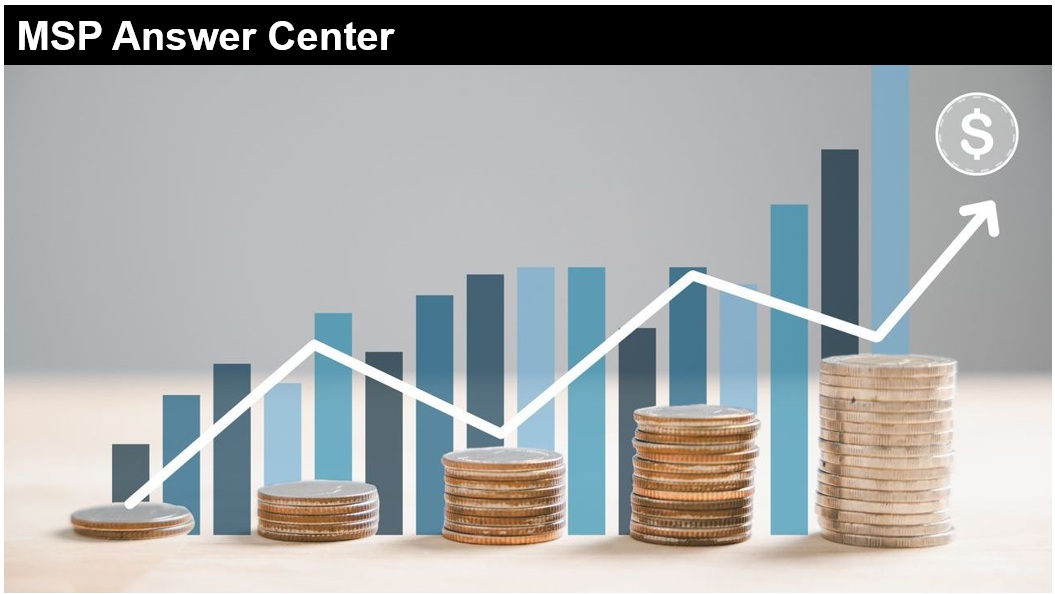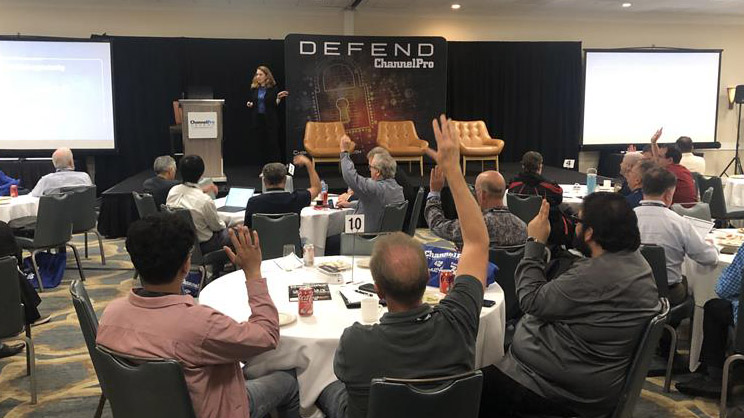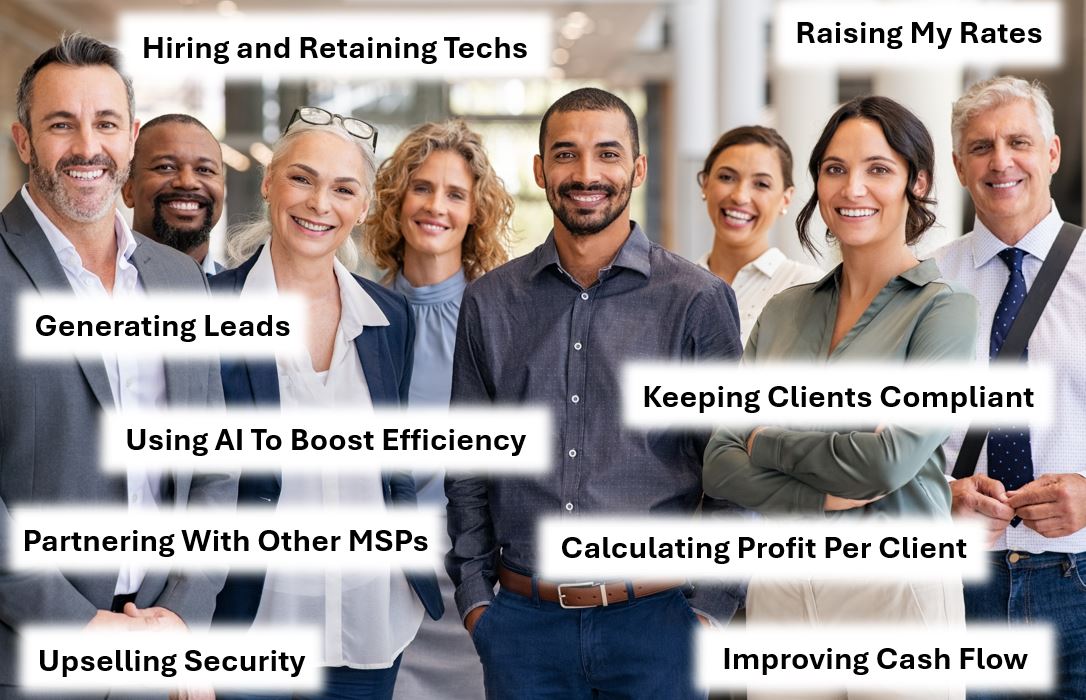THE STATE OF CHANNEL stickiness is … well, rather “unsticky.”
According to a recent survey from technology consultancy Analysys Mason, “SMB churn with channel partners suggests that IT service providers need to improve their performance.”
Indeed, the survey report, SMB Technology Demand in the USA, found 35% of small businesses (and 57% of medium-size business) had changed their IT services channel partner in the last 12 months—not very sticky at all.
The report’s conclusion: “This should be a wakeup call to vendors and providers to create value propositions that address SMBs’ future goals and facilitate stronger relationships with SMBs.”
What Is “Stickiness”?
When it comes to client relationships, the term “sticky” refers to the qualities that affect retention.

Bob Coppedge
Bob Coppedge, CEO of Stow, Ohio-based Simplex-IT, gives the concept of “stickiness” a lot of thought—but finds the term itself to be a bit misleading. “For as much as computers are supposedly accurate and specific, half our industry uses buzzwords that can mean 20 or 30 different things,” he quips. “‘Stickiness’ is one of them.”
Coppedge suggests two metaphors for conceptualizing different types of enduring client relationships. The first is a “hostage” or “prison” environment, where MSPs create solutions so customized and convoluted that the cost of moving client data precludes the client from changing providers. The other is a “resort” environment, where the client is so content and stress-free, they wouldn’t even consider changing services.
“We definitely fall on the resort side,” he says. “We want to create the relationship such that the default thought from the client is, ‘This service is so great why would we ever want to change?'”
Juan Fernandez, co-founder and CEO of MSP Growth Coalition and co-chair of CompTIA’s Channel Development Advisory Council, sees a similar dichotomy. “In the customer-hostage environment, you create stickiness because you have all this data,” he says, “but customers realize these traps.”
Fernandez says rather than boxing a client in, he much prefers a more “positive approach” in which customers are able to “get away” if they want to—but they simply don’t want to.
“I want it to be so attractive to stay that they never leave,” he says, “and that only comes from deep customer engagement. I’m not interested in owning your tenant or your backups or server infrastructure because I’m not trying to hold you hostage; I’m trying to deliver mutual success.”
Avoiding Portfolio Creep
The “deep customer engagement” that leads to long-term client relationships begins well before the sales process. It actually starts with the MSP’s portfolio.

MJ Patent
Nothing makes IT services less sticky than a hard-to-grasp menu of offerings. MJ Patent, co-founder and CEO of channel marketing consultancy Alveo Strategy, puts it this way: “If your sales team can’t figure out exactly what you’re offering, then how will the client figure it out?”
The first step, Patent says, “is making sure your services portfolio makes sense and aligns with your story.” She notes that MSPs add practices outside their competency far too often.
“It blows my mind how often people talk about ‘adding on,'” Patent says. “I get it; MSPs don’t want to leave money on the table. But that shouldn’t drive your service portfolio. If you’re standing up a new practice, and it’s crap, you’re killing your delivery teams, customers are not going to have a great experience, and it’s going to impact your entire brand.”
Talk about an unsticky start.
Fernandez takes it a step further. He advocates MSPs not only define and limit their quality service offerings but take a hard line about what goes into those services—and what the price will be.
“Don’t mess around. Know your stack, and know the cost of goods,” he says. “When we start taking away pieces people need [in order to reduce down], we ultimately give them a bad experience. My price is my price, and if we’re not going to deliver something good, then we shouldn’t even do it.”
Patent recommends keeping a handy list of referral partners for needs outside your own competency. “If my clients are looking for a service I don’t specialize in providing, then I provide a list of already-vetted companies,” she says. “And there I go again, adding value to our trusted relationships.”
Choosing the Right Clients
Once the scope of services is neatly bundled and clarified, channel pros need to home in on the right clients with which to build a deep engagement. Not every MSP-client relationship is meant to be, points out Craig Pollack, who has come to that understanding after running Los Angeles-based FPA Technology Services, the company he founded, for the past 31 years.

Craig Pollack
“We do have a base foundation and certain minimums,” he says. “If we’re going to have to twist your arm to put in dual authentication or backups, then it’s not for us.”
Pollack continues, “We want people that we’re going to work together with. If you’re going to view us as a vendor, this isn’t going to work. If you’re just going to call us when things break, this isn’t going to work. If you just want to see IT as a cost center and not an investment, then again, this won’t work.”
Clients who view their MSPs as long-term partners don’t want slick sales presentations either, but rather sincere and honest discussions about their needs, according to Coppedge, whose career in IT is more than 40 years mature.
“What keeps me up at night is, ‘Am I a commodity?'” Coppedge says. “Am I something that can be easily duplicated and competed with? What’s my unique value?”
That unique value, he believes, is empathy.
“We always talk about listening skills,” Coppedge explains, “but we also have to talk about demonstrating empathy to client pains. The more you can show that you understand, the more the client will accept that you’re listening and working to improve their organization.”
For Coppedge, empathy doesn’t come easy. “I have absolutely horrible empathy skills,” he confides. “But I can fake it.”
It’s a skill Coppedge learned doing improvisational theater through a technique called “Yes, And.” The concept is that you build upon the ideas being presented rather than redirect them. If a client is concerned that too many emails are being filtered out of an inbox, for example, Coppedge would say, “Yes, and that could cause you to miss critical messages.”
He continues, “You want the [potential client] to know that you do get it. Offer an insight or an extension of what they’re sharing.”
In her consultancy, Patent calls this “understanding the buyer’s journey.” MSPs can empathize by understanding what a client is trying to achieve and what their goals are, she says. Probe for, “What are they thinking? What actions are they taking?” Patent advises.
Establishing and Aligning Processes
As the sales process moves forward, MSPs that incorporate a holistic approach will be best positioned to foster a sticky, long-term relationship. For instance, Patent says, sales scripts and marketing materials shouldn’t be crafted in silos, but hand-in-hand with the operational processes that will later fulfill their promises.
“As you move from sales to delivery to support, you need to make sure all those teams align,” she advises. “I’ve seen so many sales teams hand it over and walk away.”
Patent recommends MSPs hold kickoff meetings with new clients or prospects that include all the team members from across departments. For ongoing communication, she suggests using a tool like Slack or Teams. “Make sure there’s a single source of truth,” she says.

Juan Fernandez
After kickoff, the impression an MSP makes in the first few weeks is critical. If you ask Fernandez, the customer relationship is earned—or squandered—during the onboarding process.
“The first few weeks of the customer’s interaction with you says a lot about their future interactions,” he points out. “If you don’t get it right within that first 72 hours of turning them on, it’s really hard to come back from that.”
For Pollack, successful onboarding balances attention to detail with reasonable timetables. “It’s really important to set expectations and consistently come through on them,” he says.
Fernandez suggests MSPs do a few trial runs at an onboarding process. “Go through your own customer journey,” he advises. “Onboard yourself and see where the holes are.”
Documentation is key, which is why Fernandez was a stickler about it when he headed an MSP division of a large company. “Taking pictures, documenting infrastructures—we used to have a 36-page Excel spreadsheet and my people hated it,” he recalls.
Fernandez recommends defining and refining a process of customer success that includes a 30-day onboarding process, a 60-day check-in procedure, and a 90-day quarterly business review. “When you show them the plan, and your process is clearly defined down to the smallest nuances, you’re not leaving things to chance. Every time you talk to them, you can say, ‘Here’s where we were, here’s where we are, and here’s where we are going.'”
Showcasing Your Value
Pollack is a proponent of client management, which includes communicating about and validating services through FPA’s client portal. The self-service portal provides dashboard access to invoices, ticket history, documentation, password management, and more.
“The thing with MSPs is that a lot of times we just do stuff, and the client doesn’t really know what those things are or mean,” Pollack says. “The more you can communicate is super valuable.”
In addition to presenting key stats in the dashboard, Pollack makes it a point to send out an executive summary each month, highlighting the evidence-based value the accomplished tasks provide the client.
Patent agrees that MSPs need to be better at showcasing their value. “To promote stickiness, QBRs [quarterly business reviews] only work if they go beyond reporting,” she explains. “Make sure they talk about client objectives and how you are helping to create impact.”
In addition to regular QBRs, Patent recommends monthly leadership calls to “make sure you have a high-touch, collaborative environment.” She also suggests including your best clients in presentations or case studies and white papers. “It’s a marketing opportunity, and it’s going to force that client to think about whether the thing provided is adding value.”
Monthly client-specific newsletters are another way to keep value front of mind. Fernandez recommends customer testimonial videos, webinars, blog postings, referrals, and social media posts as additional ways of reaffirming that added-value message.
Coppedge values light training and social events, too, to keep clients engaged. “We also do weird holidays,” he says. “We do Pi Day, where we drive out and leave pies with clients on March 14th. It’s fun.”
Gathering Feedback
There are various ways to gauge client satisfaction, enabling an MSP to adjust if something is amiss. Pollack uses the SmileBack customer satisfaction survey solution from ConnectWise.
Beyond surveys, Patent advises her MSP clients to study retention rates. “You’re looking at lifetime value and percentage of customers that have more than one line of business, looking at expansion within accounts.”
Another key data point is referrals. Patent suggests asking, “How many referrals are you getting? And from whom? If customers are really happy, they will be referring the business.”
If you do have an unhappy customer who wants to leave, “don’t forget exit interviews,” reminds Coppedge. He says that when Simplex-IT loses a client, he asks about the factors that led to their leaving. “There are ways you can basically say, ‘Look, I’m sorry it has come to this, and if there’s something we can reasonably do, I’d love to talk about it.’ It’s not an adversarial conversation.”
To gauge the entire customer journey, Patent advises keeping track of conversion rates. “How many people go from website to lead to NQL to a sales-accept lead to sales-qualified lead to opportunity to closed deal. You want to look at all those conversion points to see what you can tweak.”
Fostering a Client-focused Culture
At the end of the day, long-term client relationships result from a company-wide culture that engenders loyalty and trust. It’s the entire MSP practice engaging in what Fernandez calls a “mutual hand-holding experience.”
There needs to be a shared understanding of what’s being provided—beyond the products. “We all believe technology products solve problems, but it’s not that,” Fernandez says. “We are the product. Our procedures that deliver customer satisfaction are the products.”
To this end, Patent recommends incentives for staff members to reinforce inclusive organizational objectives. “Maybe a bonus or little gift card when someone has an idea,” she suggests. “It comes back to culture and shared business goals. How do we work better together?”
For Pollack, “the quality of your overall service delivery” is the foundation. “There will be failure points in your service delivery,” he admits, “but if you set the bar high, you will make it right. As long as we keep depositing in the bank of good will, then occasionally we can draw against it.”
Image: iStock














